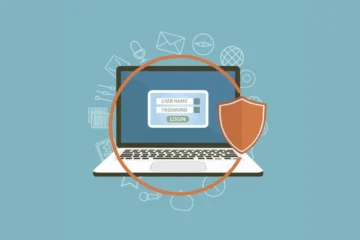In today’s interconnected world, where digital threats are a constant presence, organizations must prioritize cybersecurity. The effectiveness of your security measures often depends not only on the latest technological tools but also on your employees’ awareness and vigilance. This is where security awareness and training programs come into play. In this blog, we’ll explore the importance of building a secure culture within your organization and provide strategies for effective security awareness and training.
The Human Element in Cybersecurity
Before delving into security awareness programs, it’s crucial to understand the human factor in cybersecurity. People can be both the weakest link and the first line of defense in your organization’s security posture. Recognizing that mistakes can happen is essential. The goal is not to blame but to educate and empower your employees to become vigilant guardians of your digital assets.
Tailoring Your Training
When it comes to security awareness, there is no one-size-fits-all approach. Each organization is unique, and so are its security needs. Tailor your training programs to the specific needs and roles of your employees. Consider their existing cybersecurity knowledge and provide targeted content accordingly. A personalized approach is more engaging and effective.
Engaging and Educating Continuously
Cyber threats are ever-evolving, and so should your security awareness program. Regularly update and expand your training materials to cover emerging threats and new technologies. Make security awareness an ongoing process rather than a one-time event. This continuous approach keeps your employees informed and prepared.
Simulating Real-World Scenarios
Practical learning is often the most effective. Conduct simulated phishing attacks, for example, to help employees recognize and avoid phishing emails in real life. These simulations offer valuable learning experiences without exposing the organization to actual risks. Realistic scenarios prepare your employees for potential threats.
Promoting a Culture of Cybersecurity
Security awareness isn’t just about knowledge; it’s about creating a culture where cybersecurity is everyone’s responsibility. Encourage employees to report security incidents, share their concerns, and reward those who contribute to a safer digital environment. An organization-wide commitment to security is a powerful defense.
Leveraging Technology Wisely
Technology can be a valuable ally in your security awareness efforts. Explore e-learning platforms, gamified training modules, and automated reminders to enhance your program’s accessibility and engagement. These tools can make training more interactive and user-friendly.
Measuring and Improving
To assess the effectiveness of your security awareness program, establish metrics. Monitor the reduction in security incidents, the response to simulated attacks, and the overall cybersecurity posture of your organization. Use this data to continually refine and improve your program.
Leadership Buy-In
Secure support from top-level management. When leadership emphasizes the importance of security awareness, it sends a clear message to the entire organization. It also ensures that the necessary resources are allocated to the program.
Conclusion
In a world where cyber threats are a constant concern, cybersecurity resilience is non-negotiable. Your organization’s security awareness program serves as the foundation for building a culture of cybersecurity. By understanding the human factor, tailoring training, engaging continuously, simulating real-world scenarios, promoting a cybersecurity culture, leveraging technology, measuring progress, and gaining leadership support, you can create a security awareness program that strengthens your organization’s defense against cyber threats. Remember, cybersecurity resilience starts with informed and vigilant employees.



